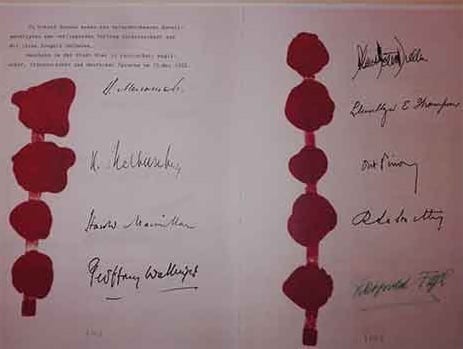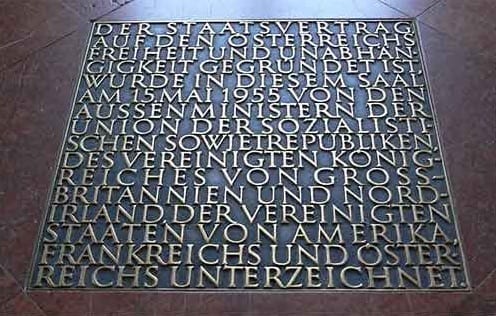This website uses cookies
We use cookies to personalize content and ads, to provide social media features, and to analyze traffic on our website. In addition, we use tracking tools such as Matomo and/or Google Analytics to collect anonymous usage data. You can block tracking on our Privacy Policy page. We also share information about your use of our website with our social media, advertising, and analytics partners. Our partners may combine this information with other data that you have provided or that has been collected as part of your use of the Services. For more information on how Google processes your data, please visit the Google Business Data Responsibility page.
Data Protection
This website uses cookies to offer you the best possible user experience. Cookie information is stored in your browser and enables functions such as recognizing you when you return, and helps our team understand which sections of the website you find most interesting and useful.
Strictly Necessary Cookies
Strictly necessary cookies should always be enabled to save your cookie settings.
Marketing & Statistics
This website employs tracking tools such as Matomo and/or Google Analytics to collect anonymous data, for example, regarding the number of visitors and the most popular pages. Enabling these cookies helps us to continuously improve the website.
Google Tag Manager
This is a tag management system. Using the Google Tag Manager, tags can be centrally integrated via a user interface. Tags are small pieces of code that track activities. Script codes from other tools are integrated via the Google Tag Manager. The Tag Manager allows controlling when a specific tag is triggered.
- +43 1 585 04 55
- office@amazing-sisi.at
- Daily from 9:30 to 19:00
Fiaker Ride
Finally, take a seat in a comfortable carriage and fly back to the present day with the enchanting Fiaker Ride.
Explore Vienna from the air and experience fantastic views of Hofburg Palace, Schönbrunn Palace, St. Stephen’s Cathedral or the Viennese Prater which do not exist anywhere else! Enjoy the new Fiakerride with laser effects and 3D mapping. Experience fireworks at the end of your Time Travel. The great views over Vienna are unique and confirm that Vienna is one of the most liveable cities in the world.
Fiaker and Vienna today
In Vienna, we look back on a 300 years old history of the Fiaker. What the gondolas mean for Venice are the Fiakers in Vienna. The Fiaker consists of three parts: horses, carriage and coachman.
The term Fiaker comes originally from the French, as was in the Rue de Saint Fiacre in Paris, thefirst standfor pay-carriages. These were first used by a merchant in 1662. The namesake was, however, the Irish monk Fiacrius, whose image was on the outer wall of the local tavern. Saint Fiacrius received the heavenly patronage over this new profession.
In Vienna, the first Fiaker license was granted about 30 years later. In the 19th century. there were about 1,000 Fiakers in Vienna. Since the First World War, Fiakers in Vienna have been mainly rented for city tours, Prater visits (popular with confirmations) and special occasions (such as weddings).
The first female coachmen have been around since 1984. The prices for the tours are set by the City of Vienna and the traditional clothingis also regulated by law. Since 1998 a licence is necessary to be able to work as a Fiaker in Vienna.
Today there are about 40 Fiaker companies with 200 Fiaker-Horsecarriages in Vienna. Many of these carriages are now over 100 years old.
Among the approximately 40 Viennese coffee specialities, there is even a Fiaker coffee. This is a drink that is half composed of black coffee and whipped cream and refined with rum.
The Fiakergulasch is a popular Viennese dish. The Fiaker is also mentioned in numerous Viennese songs.
The State Treaty
The Austrian State Treaty was signed after10 years of occupation (1945-55)on May 15, 1955in theMarble Hall of the Belvedere Palace. It concerned the restoration of free, independent and democratic Austria. Neutralitywas an important negotiating criterion. Leopold Figl and Julius Raab were the politicians involved Leopold Figl, then Foreign Minister, was one of the signatories of the State Treaty, together with the respective Foreign Ministers and High Commissioners of thefour occupying powers. Figl is wellknown for his famous words: “Austria is free”.
The respective Foreign Ministers and High Commissioners have signed the State Treaty: Molotov and Ilyichov for the Soviet Union, Macmillan and Wallinger for Great Britain, Dulles and Thompson for the USA, and Pinay and Lalouette for France. Leopold Figlsigned with agreen ink.
It is interesting that the Original of the State Treaty is kept in Moscowand not in Vienna. The document contains nearly 300 pages with translations in Russian, English, French and German. It is in the archive of the Russian Foreign Ministry in Moscow. Sometimes, the document comes to Austria for exhibitions.


Capital of Austria
With over 1.8 million inhabitants, Vienna is the capital of Austria and at the same time one of the nine Austrian provinces.
Around 1900, Vienna already had over 2 million inhabitants, making it the fifth largest city in the world. At that time, Vienna was the imperial and royal capital and was regarded as the cultural and political center of Europe.
Architecturally, Vienna is still characterized by the buildings around the Vienna Ringstrasse from the Wilhelminian period, but also by the Baroque and Art Nouveau. The Hofburg was more than 640 yearsimperial residence and is one of the largest building complexes in the world.
Today, the Hofburg is the seat of the Federal President, as well as of the Federal Chancellor. About 15 museums are located here and a modern conference center attracts many guests from abroad. This was already the case at the Congress of Vienna in 1814/15, where Vienna played a significant role in international diplomacy, which has survived to this day.
The historic center of Vienna and Schönbrunn Palace are UNESCO World Heritage Sites. Vienna is highly connected with classical music. The Vienna State Opera is one of the most important and beautiful opera houses worldwide.
Vienna is a green city, as nearly 50% of the area is green zone. The Prater, the green lung of Vienna, also plays a large part in this. There is the Giant Ferris Wheel, one of the landmarks of Vienna, besides of St. Stephen’s Cathedral. Vienna is considered to be a city with a very high standard of living and, in recent years, has consistently ranked number 1 in cities with the best quality of life worldwide.
After his father died suddenly of scarlet fever in 1849 at the age of only 45, the son was able to take over his father’s orchestra. It was not until 1852 that Johann Strauss Sohn was entrusted with the performance of music at the imperial court. Later thetitle of k.k.Hofballmusik-Direktor followed.
The operetta “Fledermaus” and the “Gypsy Baron” created further hype. He was showered with invitations and honors as the Waltz King. During the day he composed countless waltzes and operettas, and in the evening he played late into the night. He became famous worldwide for the Donau Waltz, which is considered the secret anthem of Austria.
Strauss’ enormous workload took its toll: physical breakdowns necessitated a series of spa staysin 1853-55. He was inspired in Badgastein and then spent a few seasons as a guest in Pavlosk near St. Petersburg, where he also won over the Russian tsar’s family. It was the performances in Pavlovsk thatfinally made Strauss’s son step out of his father’s shadow in Vienna.
In 1862 he married Henriette, a former singer seven years his senior, called Jetty, who also became his manager. After she died in 1878, he married the actress and singer Ernestine Dittrich, called Lili, who was 25 years younger. However, it soon came to divorce because of another man. He consoled himself with Adele Strauss, who was 31 years younger. In order to marry her, he converted from Catholicism to Protestantism and even left the Austrian state and became a citizen of Saxe-Coburg and Gotha.

In 1862 he married Henriette, a former singer seven years his senior, called Jetty, who also became his manager. After she died in 1878, he married the actress and singer Ernestine Dittrich, called Lili, who was 25 years younger. However, it soon came to divorce because of another man. He consoled himself with Adele Strauss, who was 31 years younger. In order to marry her, he converted from Catholicism to Protestantism and even left the Austrian state and became a citizen of Saxe-Coburg and Gotha.
In 1872 he embarked on his longest concert tour, which took him across the Atlantic to the “World Peace Festival” in Boston and on to New York. However, he quickly suffered from homesickness and was glad to be able to make a guest appearance in Vienna again.
On June 3, 1899, he died at the age of 74 as a result of pneumonia. He was married three times and left no children.
His monument in the City Parkis one of the most photographed in Vienna and we can visit his honorary grave at the Central Cemetery. Furthermore, his former residence on Praterstraße, where he composed the famous Danube Waltz, can be visited. In addition, there is an interesting museum about the Strauss dynasty in the 9th district.
Opening hours
Daily from 10:00 – 20:00
Tour starts every 20 – 30 minutes
We ask you 15 minutes before
Tour start to arrive
Duration: about 30 minutes
Last admission: at 7:30 p.m.
Directions Parking
Habsburgergasse 3/8
1010 Vienna
When digging
Payment options

A partner company of the
Vienna City Card

© Copyright 2025 Amazing Sisi. | Imprint | Privacy Policy
